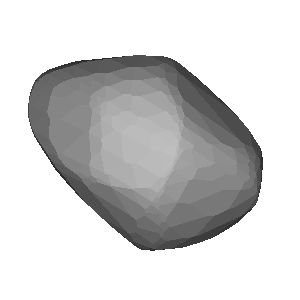2007-11-08 / 2UC 31985164 / (329) Svea
| # | OBS | Observer | Occ | Meth. | Instr. | CC | TSRC | UT1 | UT2 | UT3 | UT4 | UT2E | UT3E | Dur. | Chrd |
|---|---|---|---|---|---|---|---|---|---|---|---|---|---|---|---|
| 1 | show | Michel Bonnardeau | O+ | CCD | M203 | FR | GPS | 00:33:28 | 00:34:10.68 | 00:34:18.40 | 00:34:28 | 2.65 | 7.72 | 69.5 | |
| 2 | show | Mogens Blichfeldt | O+ | VID | M280 | DK | GPS++ | 00:32:17.36 | 00:32:25.92 | 0.03 | 0.03 | 8.56 | 77.0 | ||
| 3 | show | Joan Rovira | O- | VID | M200 | ES | 00:32:10 | 00:40:20 | |||||||
| 4 | show | Raymond Poncy | O- | CCD | M400 | FR | 00:34:00 | 00:35:04 | |||||||
| 5 | show | E. Frappa/A. Klotz | O- | CCD | M250 | FR | 00:33:39 | 00:36:47 | |||||||
| 6 | show | Manfred Rain | O- | VIS | M200 | DE | 00:31:45 | 00:35:40 | |||||||
| 7 | show | Henk De Groot | O- | VID | M356 | NL | 00:29:09 | 00:38:24 | |||||||
| 8 | show | Helmut Denzau | O- | VID | M356 | DE | 00:26:00 | 00:38:00 |
8 observations found in db: euraster
Available (probably) matching predictions (click on the link to switch):| JPL#85 : bc1c84c4-3f09-4993-86e5-625a1c02ce26 [db: observed] |
Using prediction bc1c84c4-3f09-4993-86e5-625a1c02ce26 for map and profile fit
| Ellipse and circular profile fits to the timings (chords) |
|---|
|
|
Auto-Fit Result: X0,Y0 = 3256.5, 8.2 km Circular diameter = 88 km From 2 chords (VID,CCD) You can enter space separated chord numbers (example: 11 4 8) or a method like VIS to ignore all visual timings, or a time source like RAD and NTP (but not GPS). If the plot disappears, then there are less than 2 chords left (too much ignored, go back with browser). Check SiMDA for size and mass data. Check Johnston Archive for satellites. |
Sky projection (artificial light) for occ. time: 2007-11-08, 00:34 UT (JD = 2454412.524)
| DAMIT | Q | P (h) | λ, β | JD0 | JD-JD0 | φ0 | Version | Modified | Vol-equiv D | Cmnt |
|---|---|---|---|---|---|---|---|---|---|---|
| # 1867 | 3.0 | 22.767 | 33°, 51° | 2.446594e6 | 7818.5 | 0.0° | None | 2018-03-22 | 77.0 +/- 4.0 km | 2018-03-22 |

Image size: 300px. Transparent image background for copy & paste
| Map with groundtrack and observer stations |
|---|
| Event Details |
|---|
Occultation UUID [and DB] : bc1c84c4-3f09-4993-86e5-625a1c02ce26 [observed] Occultation Date + Time : 2007-11-08 at 00:38:49 UT +/- 0.03 min [1] Object Designation : (329) Svea Orbit Class : MBA Star Designation : GDR3 3222443937042963584 Star Coordinates (ICRF) : RA = 05 38 35.6223, DE = +00 56 14.494 [2] Star Magnitudes : G = 11.63 mag, RP = 10.87 mag, BP = 12.24 mag Object Magnitude : V = 13.71 mag Estimated Magnitude Drop : 2.2 mag Estimated Max. Duration : 8.7 sec Object Mean Diameter : 78 km (src: astorb) Speed of the shadow : 9.0 km/s Elongation to Moon & Sun : 116° (sunlit = 3%), Sun = 136° Cross-track uncertainty : 1.0 mas = 1 km = 0.02 path-width (1-sig) RUWE and duplicate source : 1.75 mas, dup.src = 0 (0:false, 1:true) Ephemeris Reference : JPL#85 [1] time t0 of closest geocentric approach c/a, [2] including proper motion until t0 |
| More Data and Informations |
|---|
(If error 404: link not valid which means no data available)
| Aladin Sky Atlas |
|---|
| Aladin Lite direct link (has Gaia overlay) |